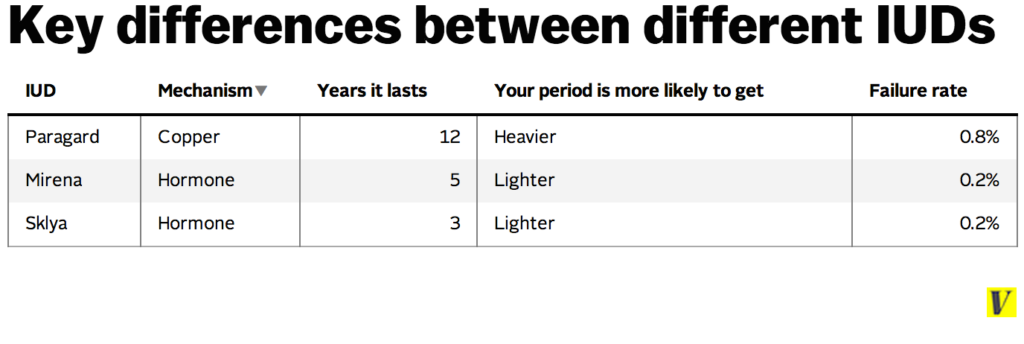On This Page
What Is an IUD and How Does It Work?
According to the American College of Obstetricians and Gynaecologists (ACOG), an intrauterine device (IUD) is a small, T-shaped device inserted into the uterus to provide long-term contraception. It works primarily by preventing fertilization and sometimes ovulation.
There are two main types:
- Hormonal IUDs (like Mirena) release progestin to thicken cervical mucus, thin the uterine lining, and sometimes stop ovulation.
- Copper IUDs (like Paragard) release copper ions toxic to sperm, preventing fertilization.
Both types are over 99% effective at preventing pregnancy when properly used.

Related Article
Birth Control Options: Which One Is Right for You?
How Likely Is It to Get Pregnant With an IUD?
While extremely effective, pregnancy with an IUD can happen, but it’s rare, less than 1%. Risks include:
- The IUD moving or shifting position (symptoms of a moved IUD include pain or missing strings)
- Partial or full expulsion of the device
- Using an expired device (expired Mirena IUD symptoms can include irregular bleeding or cramps)
- Incorrect insertion or failure of the device
Pregnancy with an IUD is considered high risk for ectopic pregnancy, so if you suspect pregnancy, see your healthcare provider immediately.
Signs and Symptoms to Watch For
Be alert if you experience:
- Missed or late periods
- Unusual pelvic or abdominal pain
- Spotting or unusual bleeding (iud bleeding)
- Changes in IUD strings or no longer feeling them
- Symptoms of early pregnancy such as nausea or breast tenderness
What to Expect with Your Period on an IUD
How your period changes depends on the type of IUD:
- Hormonal IUDs often cause lighter periods or even no periods at all (sometimes just 4 periods a year birth control).
- Copper IUDs can increase menstrual bleeding and cramping, especially in the first few months.
Some spotting is normal, but heavy bleeding should be evaluated.
IUD Removal and Fertility
Once the IUD is removed, fertility returns quickly. Many conceive within 1 to 3 months. Your provider may advise waiting 2 weeks after IUD removal before trying to conceive to reduce infection risk.
Is the IUD Safe?
Per ACOG, IUDs are safe and recommended for most people as a highly effective contraceptive option. Benefits include long-term pregnancy prevention, convenience, and reversible fertility. However, be mindful of risks like expulsion, infection, or rare pregnancy.

